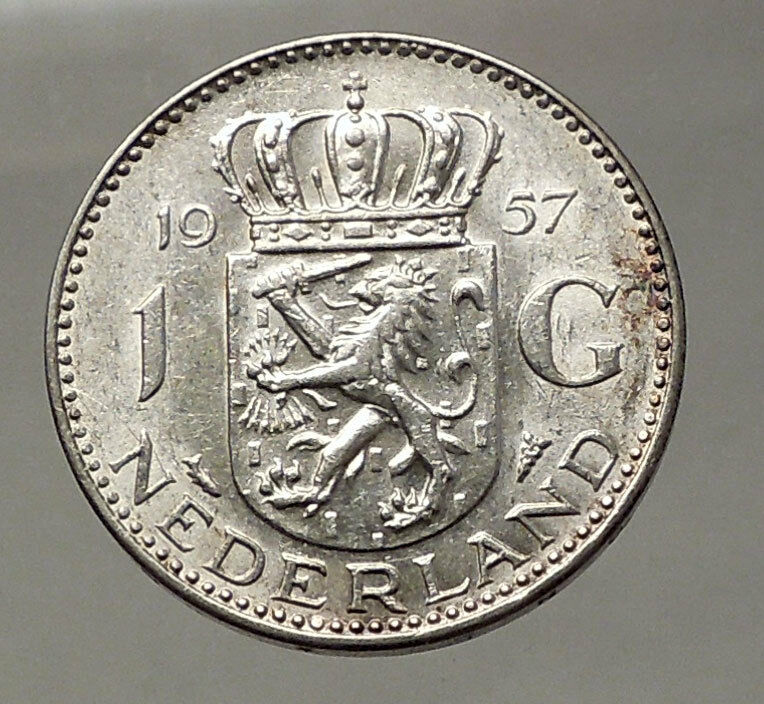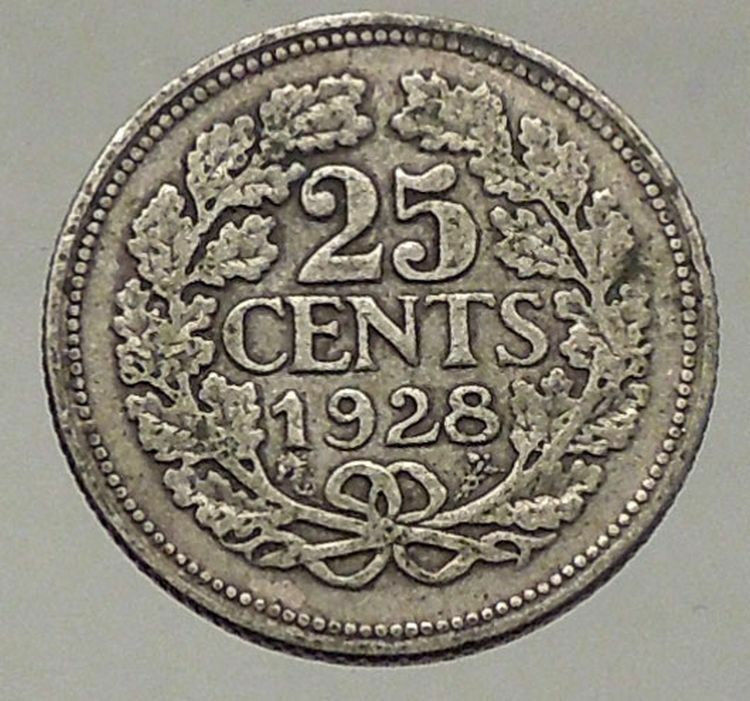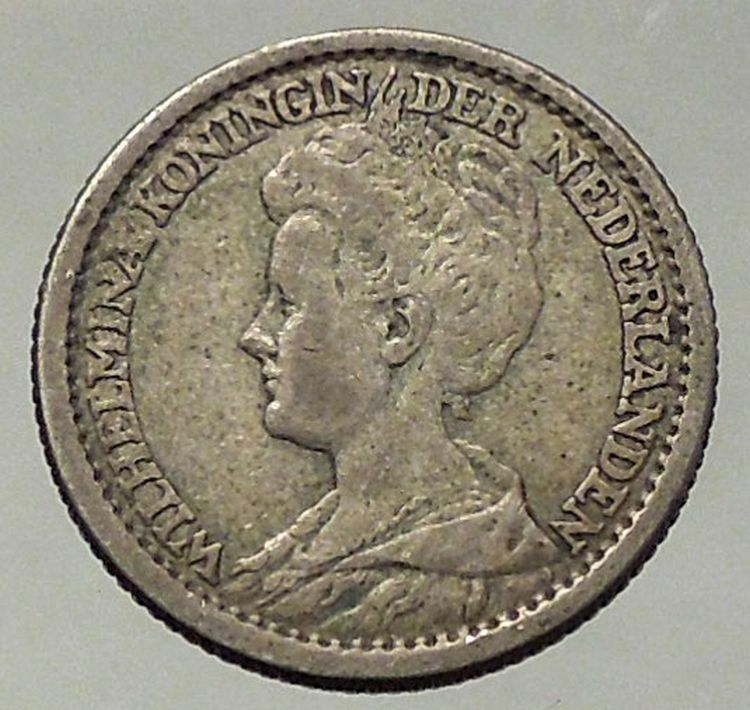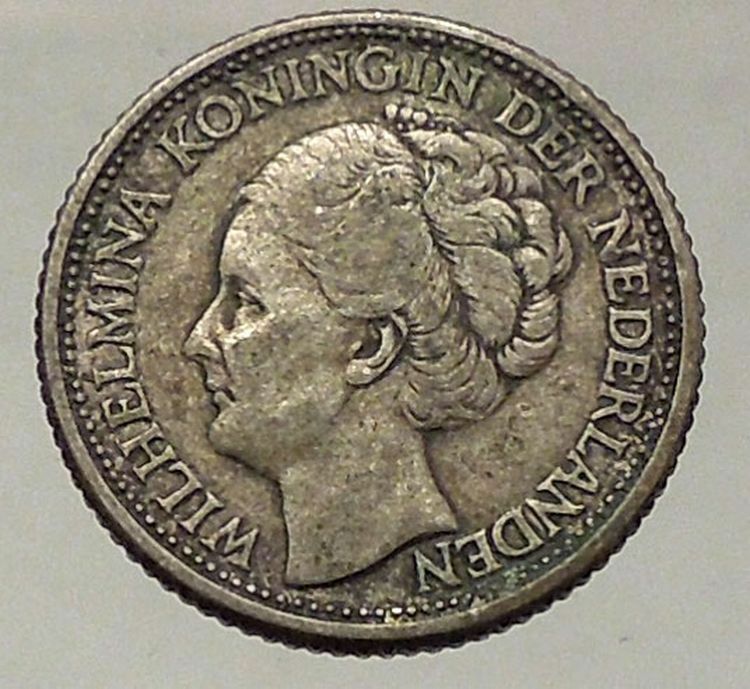|
Netherlands
under Wilhelmina: Queen November 1890 – 4 September 1948
1897 Silver 10 Cents 15.2mm (1.38 grams) 0.640 Silver (0.0286 oz. ASW)
Reference: KM# 116 (1892-97)
WILHELMINA KONINGIN DER NEDERLANDEN, Head of Queen Wilhelmina left.
10 CENTS, Wreath.
You are bidding on the exact item pictured, provided with a Certificate of Authenticity and Lifetime Guarantee of Authenticity.

Wilhelmina (31 August 1880 – 28 November 1962) was Queen of the Netherlands from 1890 until her abdication in 1948. She reigned for nearly 58 years, longer than any other Dutch monarch. Her reign saw both World War I and World War II, as well as the Dutch economic crisis of 1933.
The only child of King William III of the Netherlands and Emma of Waldeck and Pyrmont, Wilhelmina ascended to the throne at the age of 10 after her father’s death in 1890, under her mother’s regency. After taking charge of government, Wilhelmina became generally popular for maintaining Dutch neutrality during the First World War and solving many of her country’s industrial problems. By that time, her business ventures had made her the world’s first female billionaire in dollars. She went on to ensure that her family was one of seven European royal houses remaining in existence.
Following the German invasion of the Netherlands in 1940, Wilhelmina fled to Britain and took charge of the Dutch government-in-exile. She frequently spoke to the nation over radio and came to be regarded as a symbol of the resistance. By 1948, she had returned to the liberated Netherlands and was the only survivor of the 16 monarchs who were sitting on their thrones at the time of her coronation. Increasingly beset by poor health, Wilhelmina abdicated in favour of her daughter Juliana in September 1948 and retired to Het Loo Palace, where she died in 1962.
She remains popular in the Netherlands, even among the Dutch Republican movement. This is due to her being seen as a symbol of Dutch Resistance during World War II.
The Kingdom of the Netherlands , commonly known as the Netherlands, is a sovereign state and constitutional monarchy with territory in western Europe and in the Caribbean .
  The four parts of the Kingdom – Aruba , Curaçao , Sint Maarten and the Netherlands – are constituent countries (landen in Dutch ) and participate on a basis of equality as partners in the Kingdom. In practice, however, most of the Kingdom affairs are administered by the Netherlands – which comprises roughly 98% of the Kingdom’s land area and population – on behalf of the entire Kingdom. Consequently, the countries of Aruba, Curaçao, and Sint Maarten are dependent on the Netherlands for matters like foreign policy and defence , although they are autonomous to a certain degree with their own parliaments . The four parts of the Kingdom – Aruba , Curaçao , Sint Maarten and the Netherlands – are constituent countries (landen in Dutch ) and participate on a basis of equality as partners in the Kingdom. In practice, however, most of the Kingdom affairs are administered by the Netherlands – which comprises roughly 98% of the Kingdom’s land area and population – on behalf of the entire Kingdom. Consequently, the countries of Aruba, Curaçao, and Sint Maarten are dependent on the Netherlands for matters like foreign policy and defence , although they are autonomous to a certain degree with their own parliaments .
The vast majority in land area of the constituent country of the Netherlands (as well as the Kingdom) is located in Europe, with the exception of the Caribbean Netherlands : its three special municipalities (Bonaire, Saba, and Sint Eustatius ) that are located in the Caribbean. The constituent countries of Aruba, Curaçao, and Sint Maarten are located in the Caribbean as well.
|






.svg/220px-Kingdom_of_the_Netherlands_(orthographic_projection).svg.png)

 The four parts of the Kingdom –
The four parts of the Kingdom – 




